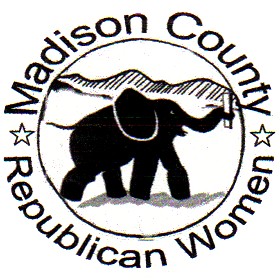Forbes Leads 17 Members from Both Parties and Houses in Support of Basing Triton at Wallops
"Wallops is an ideal site for basing unmanned aircraft…," the letter said. "Despite its central location in the Mid-Atlantic, Wallops enjoys uncrowded airspace and its rural environs generate no encroachment issues. With two 8000-foot runways and the taxiways and apron space to support additional aircraft, Wallops is ready to accommodate Triton with minimal additional construction. In addition, it is already an established center of unmanned aerial vehicle (UAV) activity and home to a number of UAVs, including NASA's RQ-4 Global Hawks, an aircraft very similar to Triton."
Congressman Forbes recently visited Wallops Island and has been outspoken about the benefits of basing the Triton at Wallops Island. The Navy is currently considering Wallops as one of three East Coast options for permanently basing the MQ-4C Triton unmanned maritime patrol aircraft. The Triton provides real-time intelligence, surveillance, and reconnaissance (ISR) capabilities in maritime and coastal regions. Should the Navy select Wallops as the permanent East Coast location, it would serve as both a launch and recovery site, as well as an operational-level maintenance hub, supporting rotational deployments of personnel and aircraft outside the United States. Roughly 400 additional personnel plus their families would be stationed there.
Wallops' central location in the Mid-Atlantic Region; its proximity to Patuxent River, Maryland where the Triton is developed; the presence of NASA's own RQ-4 Global Hawks (a similar aircraft) at Wallops; and the facility's relatively uncrowded airspace make it an ideal permanent location for this platform. Currently, the Navy is conducting an environmental assessment, with a decision on the permanent basing of the Triton expected later this year.
The facility at Wallops Island, Virginia is home to some of the most innovative work in the commercial space industry, and supports the needs of both NASA and the Department of Defense. Whether it is providing field carrier landing practice to Navy pilots, supporting rocket launches as part of Missile Defense Agency exercises, or serving as one of two U.S. sites launching vital cargo to support the International Space Station, Wallops is an integral part of U.S. space efforts.
See below for text of the letter:
May 18, 2016
The Honorable Ray Mabus Admiral John Richardson
Secretary of the Navy Chief of Naval Operations
1000 Navy Pentagon 2000 Navy Pentagon
Washington, DC 20330-1670 Washington, DC 20350-2000
Dear Secretary Mabus and Admiral Richardson,
We write in support of selecting Wallops Flight Facility in Virginia as the East Coast Forward Operating Base for MQ-4C Triton unmanned aircraft. We believe Wallops will provide an ideal home for these revolutionary aircraft and for the Sailors and families supporting them.
Located on the Eastern Shore of Virginia, Wallops is located less than 100 miles from the fleet concentration area in Hampton Roads. Naval aviation already has a well-established presence at Wallops, with E-2 and C-2 aircraft using Wallops on a routine basis for fleet carrier landing practice. Basing the first operational Tritons at Wallops would locate those aircraft in close proximity to NAS Patuxent River and Naval Air Systems Command, where the Triton was developed and tested. It would also place them in close proximity to the fleet at Naval Station Norfolk, the Master Jet Base at NAS Oceana, and the entire Virginia Capes operating area. We believe that basing Triton in close proximity to these other Navy facilities, headquarters, and operating forces will create synergies and facilitate the faster integration of Triton into the Navy's battle network. We also believe that Wallops' location provides a superior base of operations for conducting maritime surveillance missions throughout the entire Atlantic.
Wallops is an ideal site for basing unmanned aircraft, in particular. Despite its central location in the Mid-Atlantic, Wallops enjoys uncrowded airspace and its rural environs generate no encroachment issues. With two 8000-foot runways and the taxiways and apron space to support additional aircraft, Wallops is ready to accommodate Triton with minimal additional construction. In addition, it is already an established center of unmanned aerial vehicle (UAV) activity and home to a number of UAVs, including NASA's RQ-4 Global Hawks, an aircraft very similar to Triton. Unlike at many other locations, UAVs are a familiar sight in Wallops' airspace. Air traffic controllers in the region are familiar and comfortable with UAVs, including the Triton, stemming from its development period at nearby Patuxent River. Compared to other locations being considered, Wallops is also less adversely impacted by severe weather and flooding, and enjoys lower costs for housing, living, and construction.
Last but not least, Wallops and other Navy, Department of Defense, and Federal facilities in Virginia benefit from the strong support of the communities of which they are a part. As those communities' representatives in the House and Senate, we pledge to fully support an expanded Navy mission at Wallops.
We look forward to further discussing this matter with you, and providing whatever support the basing selection process may require.
Sincerely,
Senator Benjamin L. Cardin
Senator Tom Carper
Senator Christopher A. Coons
Senator Tim Kaine
Senator Barbara A. Mikulski
Senator Mark R. Warner
Representative Donald S. Beyer, Jr.
Representative John C. Carney, Jr.
Representative Barbara Comstock
Representative Gerald E. Connolly
Representative Donna Edwards
Representative J. Randy Forbes
Representative Andy Harris
Representative Scott Rigell
Representative C.A. Dutch Ruppersberger
Representative Robert C. "Bobby" Scott
Representative Chris Van Hollen
Representative Robert J. Wittman







